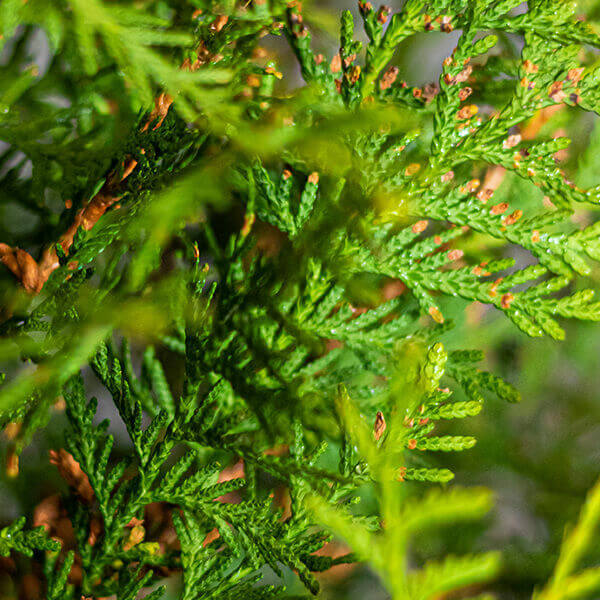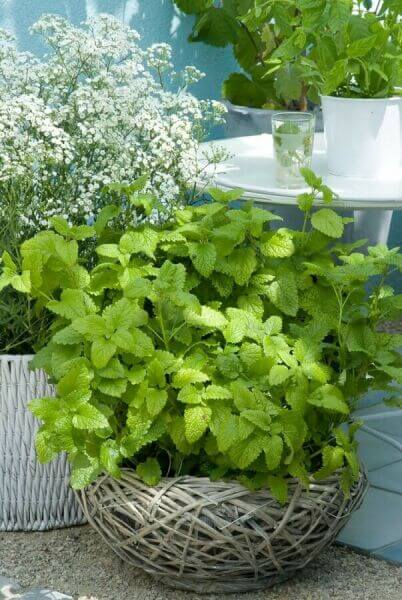Scented Hedging Plants For Fragrant Gardens
Scented Hedging Plants For Fragrant Gardens
Blog Article
Scented Hedging Plants For Fragrant Gardens
Boost your garden's allure with rich hedge ranges such as Yew (Taxus), Thuja, Laurel, Photinia, and Bamboo, celebrated for their structural stability and ecological advantages.
Yew and Thuja provide evergreen coverage and winter season resilience, while Laurel uses fast growth and broad, fragrant leaves.
Photinia includes seasonal charm with its dynamic red foliage, and Bamboo provides a low-maintenance, peaceful atmosphere.
These hedges improve air quality, decrease sound, and develop tranquil, private areas.
Proper planting, spacing, and maintenance guarantee vigorous growth and eco-friendly consistency.
Check out how these rich ranges can raise your garden's beauty and well-being.
Secret Takeaways
Transform Your Garden With Lush Hedge Ranges
- Select Yew for its thick, evergreen development and unrivaled durability.
- Go with Laurel for its quick development and broad leaves, ensuring fast personal privacy.
- Pick Photinia for its vibrant seasonal foliage, which turns a striking dark red.
- Use Bamboo for a low-maintenance, winter-hardy hedge with visual appeal.
- Area plants 2-3 per meter and prune regularly for optimal growth and health.
Popular Hedge Plants
When changing a garden with lush hedge varieties, it's necessary to think about popular hedge plants such as Yew, Thuja, Laurel, and Photinia due to their distinct qualities and benefits.
Yew (Taxus) is highly esteemed for its longevity and dense, green growth, making it a prime choice for withstanding landscapes.
Thuja is noted for its evergreen foliage and robust winter resilience.
Photinia includes seasonal vibrancy with red leaves that darken with time, developing dynamic visual appeal.
Laurel offers rapid growth and aromatic, broad leaves, perfect for fast privacy.
Furthermore, Bamboo is an excellent choice for ambiance, offering a low-maintenance, winter-hardy alternative that boosts the garden's visual with its stylish, swaying canes.
These selections deal with a range of horticultural needs and choices.
Advantages of Garden Hedges
Garden hedges use a plethora of advantages, making them an important addition to any landscape. These natural barriers are cost-effective to implement and supply considerable wind protection, boosting air flow and adding to sound decrease. The thick foliage of hedges like Thuja and Beech guarantees privacy by blocking exposure, developing a remote and peaceful environment.
Hedges likewise play a crucial function in microclimate policy, supplying a stable environment that cultivates plant growth and lessens temperature fluctuations. Their detailed leaf structures filter contaminants, improving air quality and adding to a healthier garden environment.
Moreover, hedges master sound reduction, taking in and deflecting acoustic waves to lower ambient noise levels. This double functionality of offering both visual and acoustic personal privacy enhances the general harmony and aesthetic appeal of any garden.
Planting and Upkeep Tips
For an effective hedge, precise preparation of the planting location is crucial. Guarantee the soil has correct pH and drain to support strong root development.
Space the plants properly for the chosen species. Water the hedge often throughout its initial growth stage, changing as required with seasonal changes.
Implement a methodical bug control and illness prevention strategy, using natural or chemical treatments when necessary. Routinely examine for aphids, termites, and fungal infections.
Apply mulch to maintain wetness and suppress weeds. Seasonal pruning promotes dense growth and air flow, important for plant health.
Following these guidelines will assist you cultivate a lively, well-maintained hedge that improves the appeal of your garden.
Spacing and Cutting Guidelines
Spacing and Cutting Guidelines
Appropriate spacing and cutting are vital for cultivating healthy, visually appealing hedges. Adequate spacing ensures each plant receives sufficient nutrients, light, and airflow.
Follow these guidelines for optimal hedge upkeep:
- Spacing: Position hedge plants 2-3 plants per meter to motivate robust development.
- Pruning Methods: Routine pruning is important for preserving desired hedge height and shape. Trim new development in summer season and cut down older wood during winter.
- Seasonal Care: Adjust cutting schedules and approaches according to seasonal requirements to make sure plant health.
- Hedge Height: Routinely screen and trim to preserve the preferred hedge height and achieve uniform aesthetics.
Sticking to these steps will guarantee your hedge prospers, improving both the appeal and functionality of your garden.
Picking the Right Hedge
Picking the Right Hedge
Choosing the appropriate hedge includes assessing factors such as fully grown height, foliage density, and environmental resilience. Effective hedge plant selection needs comprehending each species' development qualities and site-specific adaptability.
For instance, Yew (Taxus) provides exceptional longevity and dense development, while Thuja is notable for its winter season resilience. In addition, considering upkeep requirements is crucial; fast-growing types like Laurel or Privet demand routine cutting, whereas low-maintenance choices like Bamboo or Ivy may be more suitable for those looking for minimal maintenance.
Environmental elements such as soil type, light schedule, and moisture conditions must also direct the choice process. This mindful method ensures the selected hedges will flourish, offering both practical and aesthetic benefits to the garden landscape.
Shipment and Planting Recommendations
To ensure your hedge plants grow, they need to be provided by specialized couriers and planted quickly upon arrival.
Follow these important steps for effective planting:
- Soil Preparation: Improve the soil with raw material to improve drainage and nutrient content.
- Planting Depth: Create a trench two times the width and equivalent to the depth of the root ball.
- Watering Techniques: Water completely after planting, keeping the soil regularly wet however not saturated.
- Mulching: Apply a layer of mulch to maintain wetness and suppress weeds.
Client Support and Service
Offered the important role of prompt support in horticultural pursuits, our customer assistance team is available 6 days a week through telephone, email, and social media to use expert advice and promptly deal with any issues. Their commitment to quick action times ensures consumer complete satisfaction by resolving inquiries related to plant health, optimum planting methods, and upkeep schedules.

Schedule
Within 2 days
Within 24 hours
This comprehensive support group, enhanced by an outstanding 9.3/ 10 customer rating, highlights our dedication to boosting the gardening experience for each client.
Frequently Asked Concerns
The Length Of Time Does It Take for Hedge Plants to Establish?
Hedge plants usually need one to 3 years to become fully developed, with the precise duration differing by species and growing conditions.
Reliable care during this critical duration is important for robust development. Consistent watering, vigilant weed control, and suitable fertilizer application are pivotal in promoting strong root advancement.
For example, fast-growing types like Laurel may develop faster, while slower-growing varieties such as Yew may take longer. Persistent upkeep accelerates the facility process, leading to dense and healthy hedges.
What Are the very best Hedge Plants for Personal Privacy?
The question of the very best hedge plants for privacy involves examining evergreen and deciduous choices.
Evergreen hedges like Thuja, Laurel, and Cypress provide year-round coverage, making sure continuous personal privacy.
In contrast, deciduous hedges such as Beech provide seasonal personal privacy, shedding leaves in colder months.
Secret upkeep suggestions for personal privacy hedges include regular cutting, fertilizing in spring, and correct spacing-- generally 2 to 3 plants per meter.
In addition, constant watering and diligent weed elimination are vital for promoting healthy, dense development.
Can Hedge Plants Attract Wildlife to My Garden?
Yes, hedge plants can draw in wildlife to your garden by supplying necessary benefits like shelter, food, and nesting websites, therefore enhancing local biodiversity. For circumstances, yew, holly, and laurel are outstanding for bring in birds, while ivy supports a variety of pests.
Nevertheless, it's important to note that there are some disadvantages, such as increased upkeep to handle bugs and routine maintenance. Thoroughly picking and preserving hedge ranges can assist balance these downsides and advantages, eventually cultivating a vibrant and sustainable ecosystem in your garden.
Are There Any Blooming Hedge Plants Available?
Yes, there are flowering hedge plants available that can boost the appeal of your garden.
For instance, Elaeagnus, likewise called Olive Willow, produces aromatic white flowers in the fall, including a touch of beauty.
Photinia, another popular choice, showcases dynamic red leaves that mature into a rich green, creating a vibrant visual result throughout the seasons.
To make sure these plants prosper, it's important to practice appropriate pruning methods and seasonal maintenance, such as cutting brand-new growth in the summer and cutting back in the winter season.
These steps will help maintain the health and visual appeal of your blooming hedges.
How Do I Prevent Pests in My Hedge Plants?
To avoid bugs in hedge plants, utilize natural pest control methods and keep appropriate hedge care. Introduce beneficial pests like ladybugs, which take advantage of harmful pests, to develop a well balanced environment.
Routinely examine your hedges for signs of invasion and quickly get rid of any afflicted parts to prevent the spread. Make sure the health of your hedges by applying well balanced fertilizers and offering adequate water.
Make use of mulching to keep soil wetness and appropriate spacing to minimize plant tension and promote robust growth. These practices collectively assist in reducing insect issues and keeping a healthy hedge.
Conclusion
In essence, choosing the ideal hedge varieties such as Yew, Thuja, and Laurel can change any garden into a tranquil sanctuary. These plants supply year-round greenery, boost aesthetic appeal, and deal useful benefits like sound reduction and wind defense.
Proper planting methods, precise spacing, consistent watering, and seasonal cutting are essential for ideal development.
Reputable shipment services and expert client assistance ensure a seamless experience from purchase to planting, making it easier than ever to raise your outdoor space.
Garden hedges provide a multitude Additional hints of benefits, making them a valuable addition to any landscape. These natural barriers are cost-efficient to implement and provide considerable wind defense, boosting air circulation and contributing to noise decrease. The thick foliage of hedges like Thuja and Beech ensures personal privacy by obstructing visibility, producing a remote and tranquil environment.

Pruning Methods: Regular pruning is necessary for preserving desired hedge height and shape. Cut new development in summertime and cut back older wood throughout winter.
Report this page